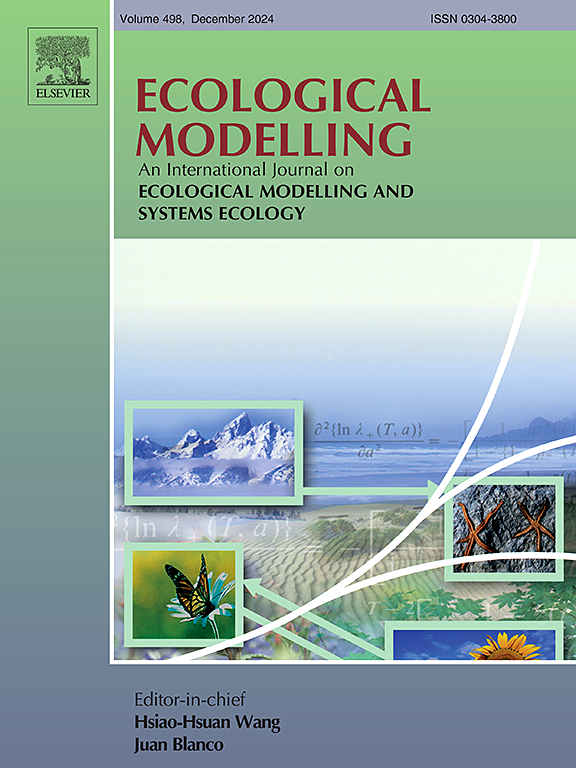Bayesian networks facilitate updating of species distribution and habitat suitability models
IF 2.6
3区 环境科学与生态学
Q2 ECOLOGY
引用次数: 0
Abstract
Managers often rely on predictions of species distributions and habitat suitability to inform conservation and management decisions. Although numerous approaches are available to develop models to make these predictions, few approaches exist to update existing models as new data accumulate. There is a need for updatable models to ensure good modeling practices in an aim to keep pace with change in the environment and change in data availability to continue to use the best-available science to inform decisions. We demonstrated a workflow to deliver predictive models to user groups within Bayesian networks, allowing models to be used to make predictions across new sites and to be easily updated with new data. To demonstrate this workflow, we focus on species distribution and habitat suitability models given their importance to informing conservation strategies across the globe. In particular, we followed a standard process of collating species encounter data available in online databases and ancillary covariate data to develop a habitat suitability model. We then used this model to parameterize a Bayesian network and updated the model with new data to predict species presence in a new focal ecoregion. We found the network updated relatively quickly as new data were incorporated, and the overall error rate generally decreased with each model update. Our approach allows for the formal incorporation of new data into predictions to help ensure model predictions are based on all relevant data available, regardless of whether they were collected after initial model development. Although our focus is on species distribution and habitat suitability models to inform conservation efforts, the workflow we describe herein can easily be applied to any use case where model uncertainty reduction and increased model prediction accuracy are desired via model updating as new data become available. Thus, our paper describes a generalizable workflow to implement model updating, which is widely recognized as a good modeling practice but is also underutilized in applied ecology.
求助全文
约1分钟内获得全文
求助全文
来源期刊

Ecological Modelling
环境科学-生态学
CiteScore
5.60
自引率
6.50%
发文量
259
审稿时长
69 days
期刊介绍:
The journal is concerned with the use of mathematical models and systems analysis for the description of ecological processes and for the sustainable management of resources. Human activity and well-being are dependent on and integrated with the functioning of ecosystems and the services they provide. We aim to understand these basic ecosystem functions using mathematical and conceptual modelling, systems analysis, thermodynamics, computer simulations, and ecological theory. This leads to a preference for process-based models embedded in theory with explicit causative agents as opposed to strictly statistical or correlative descriptions. These modelling methods can be applied to a wide spectrum of issues ranging from basic ecology to human ecology to socio-ecological systems. The journal welcomes research articles, short communications, review articles, letters to the editor, book reviews, and other communications. The journal also supports the activities of the [International Society of Ecological Modelling (ISEM)](http://www.isemna.org/).
 求助内容:
求助内容: 应助结果提醒方式:
应助结果提醒方式:


